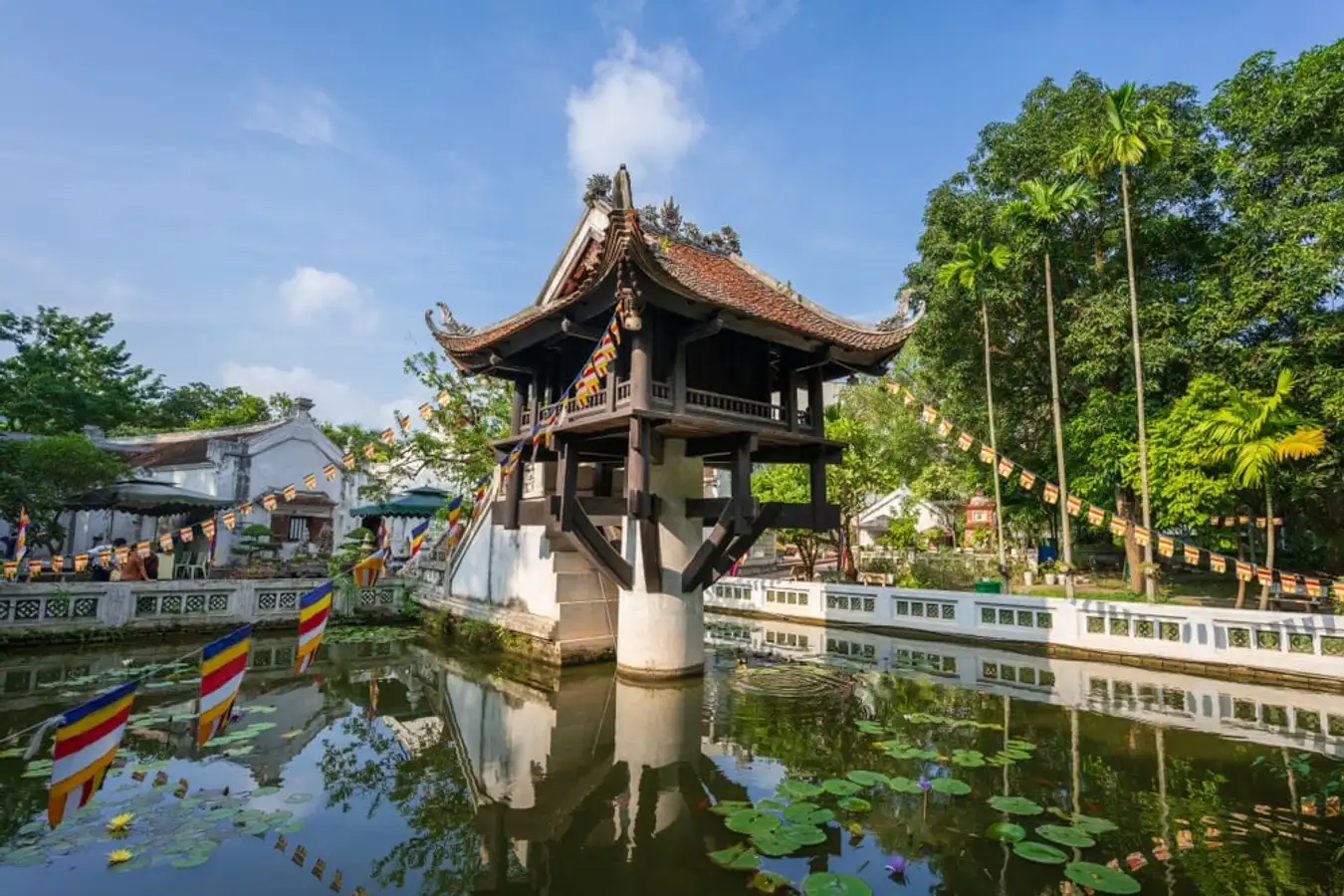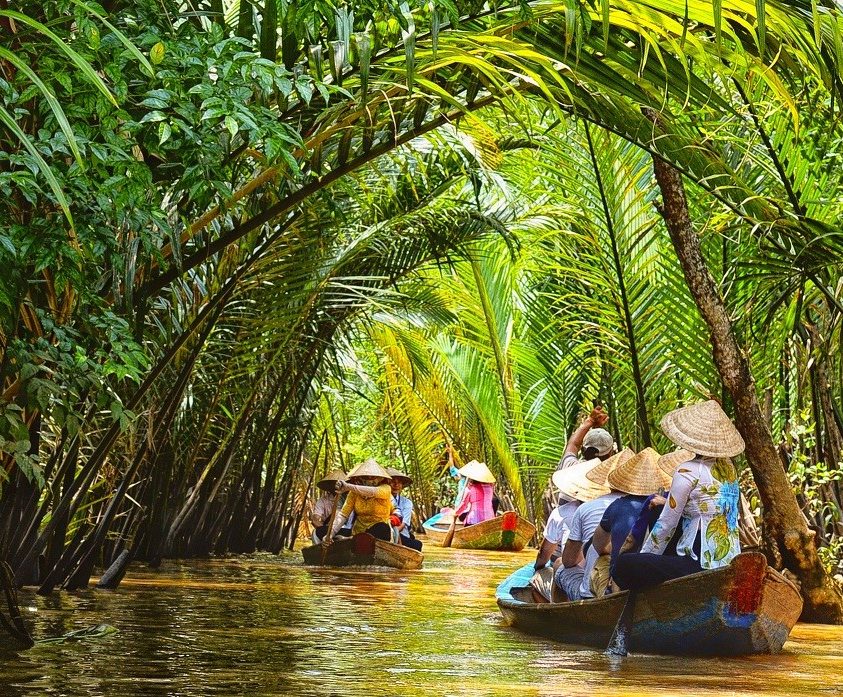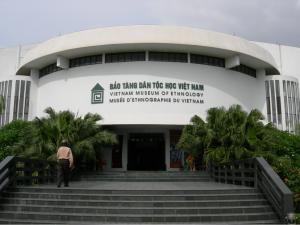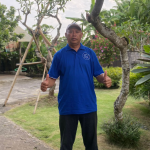The Cu Chi Tunnels: The Remarkable History of an Underground World
The Cu Chi Tunnels are known for their narrow, dark passages, hidden trapdoors hidden under plants, and deadly traps put on purpose to catch enemies. People who haven’t been to Vietnam since 1954 or 1975 haven’t heard most of the amazing stories that are hidden in this huge underground maze. Many bombs hit this “underground village,” which had kitchens, dorms, meeting rooms, and hospitals. It still stands as a testament to the creativity and bravery of the Vietnamese people during the war.
How the Cu Chi Tunnels Were Built
An inventive subterranean fortress system was established at Cu Chi, which is northwest of Saigon, the old name of Ho Chi Minh City. As part of their struggle against French colonial forces, Vietnamese farmers and guerillas started building a system of tunnels in the 1940s. Over the course of 20 years, they excavated these tunnels by hand using crude equipment, developing a system that was expertly concealed in the thick tropical bush.
As U.S. soldiers backed the non-communist government in South Vietnam grew in number by the early 1960s, the Viet Cong and North Vietnamese Army enlarged the tunnels. The Cu Chi tunnel network, which connected sites from the outskirts of Saigon to the Cambodian border, spanned over 250 kilometers at the height of the Vietnam War.
Vietnamese opposition used these tunnels as strategic infrastructure, allowing them to attack American forces and then swiftly withdraw into the depths of the jungle. Additionally, they were crucial to the Tet Offensive in 1968, which was a watershed moment in the conflict.
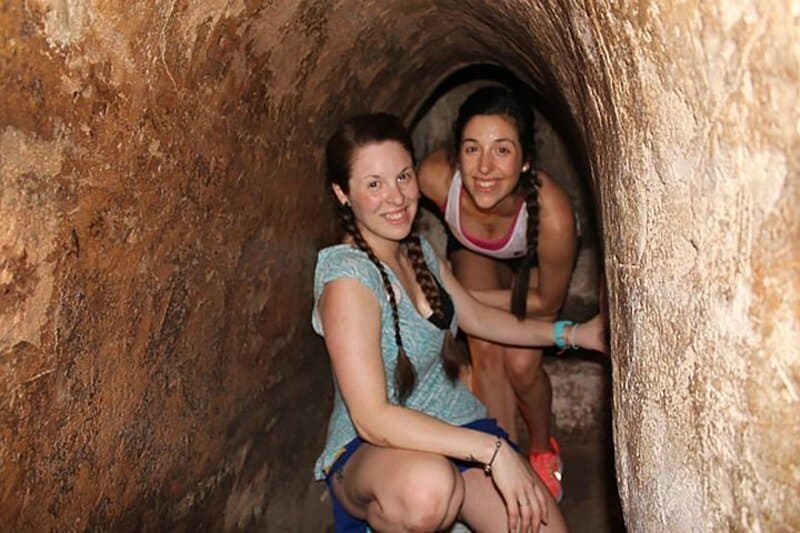
Cu Chi Tunnels: A Real City Below the Ground
The Cu Chi Tunnels’ entrances were deftly concealed, frequently concealed behind vegetation or incorporated into commonplace buildings like pigsties or village houses.
The Viet Cong employed clever strategies to avoid being discovered by American dogs, like dispersing American military equipment, soap, or aftershave to trick the dogs’ sense of smell. Furthermore, their rubber shoes were made to create false footprints that gave the impression that they were moving in the opposite direction.
Soldiers had to crawl or crouch within the small tunnels, which only permitted one person to pass at a time. Buried three to twelve meters below the surface, these passageways had three layers built to resist bombing strikes.
With branches leading to hospitals, residences, kitchens, bomb shelters, theaters, and weapons factories, the tunnels were carefully designed. Ingenious vent systems that were concealed with greenery or disguised as termite mounds allowed smoke from manufacturing or cooking to escape far from its source.
Life in the tunnels was hard, even if it was a sanctuary of safety. Residents lived off of cassava, leaves, roots, and even insects when supplies were limited. Infestations of snakes, ants, cockroaches, and spiders were frequent, and diseases, particularly malaria, were widespread.

Deadly Traps of the Cu Chi Tunnels
The Cu Chi Tunnels were not just living spaces but also strategic weapons. They housed deadly traps, such as grenade-triggered tripwires or pits filled with venomous snakes and scorpions.
Some traps involved sharp, pointed stakes that would impale unsuspecting soldiers. Ingeniously, many of these traps were crafted from destroyed U.S. artillery remnants.
Recognizing the inefficacy of heavy bombardments, the U.S. military deployed “tunnel rats”—small, agile soldiers tasked with navigating and neutralizing these treacherous tunnels. These missions were dangerous, requiring exceptional courage and keen senses.

Opening Hours and Entry Fees
Hours: Daily, 8:00 AM – 5:00 PM
Entry Fees:
- Ben Duoc Tunnels: 90,000 VND (~5 Euros) per person
- Ben Dinh Tunnels: 110,000 VND per person

Shooting Range at the Cu Chi Tunnels
When visiting the Cu Chi Tunnels, how can you miss the exciting activity of shooting? At the shooting range, staff members will enthusiastically guide you through the assembly and use of firearms, allowing you to showcase your marksmanship with pre-set targets in the designated area.
The shooting activity remains one of the most popular attractions at the Cu Chi Tunnels, particularly among international tourists. The ticket price is very affordable, at just 50,000 VND per person for 60 minutes.

Cu Chi Wildlife Rescue Station
Did you know that Cu Chi is home to the largest wildlife rescue station in southern Vietnam? Located between Ben Duoc and Ben Dinh, about 1 km from the heart of the tourist area, this station currently cares for over 3,600 rare and precious animal species. Visitors can enjoy interacting with these adorable creatures while learning fascinating facts about them from the knowledgeable staff.

How to Get to the Cu Chi Tunnels from Ho Chi Minh City
The Cu Chi Tunnels are located about 70 kilometers from Ho Chi Minh City, roughly a 2 to 2.5-hour journey.
Options for travel:
Local Bus:
- Take Bus 04, 65, or 27 from Saigon’s central bus station (Le Lai Street, District 1) to An Suong Bus Station.
- Transfer to Bus 122 to Tan Quy Station.
- Finally, take Bus 70 to the Ben Dinh Tunnels.
This option can be time-consuming, with multiple transfers, and is recommended only for those with flexible schedules.
Private Car:
For convenience and flexibility, book a private car through a travel agency. Many agencies offer complete packages that include transportation and guided tours.

Final Words
If you are interested in Vietnam War history, the Cu Chi Tunnels are a must-visit. Recognized by CNN as one of the world’s top underground attractions, this site offers a fascinating glimpse into the resilience and ingenuity of the Vietnamese people during the war. A day trip from Saigon to explore this legendary network is an unforgettable experience.

Thanh Nam Nguyen
Born in Ho Chi Minh City with Vietnamese-American roots, Thanh Nam Nguyen is passionate about adventures and traveling in Indochina. As a local guide for All Vietnam Senses, he leads tours in southern Vietnam, Cambodia, and Thailand, sharing his knowledge with travelers and inspiring readers to explore the region. Leave a comment below for him to respond directly!

